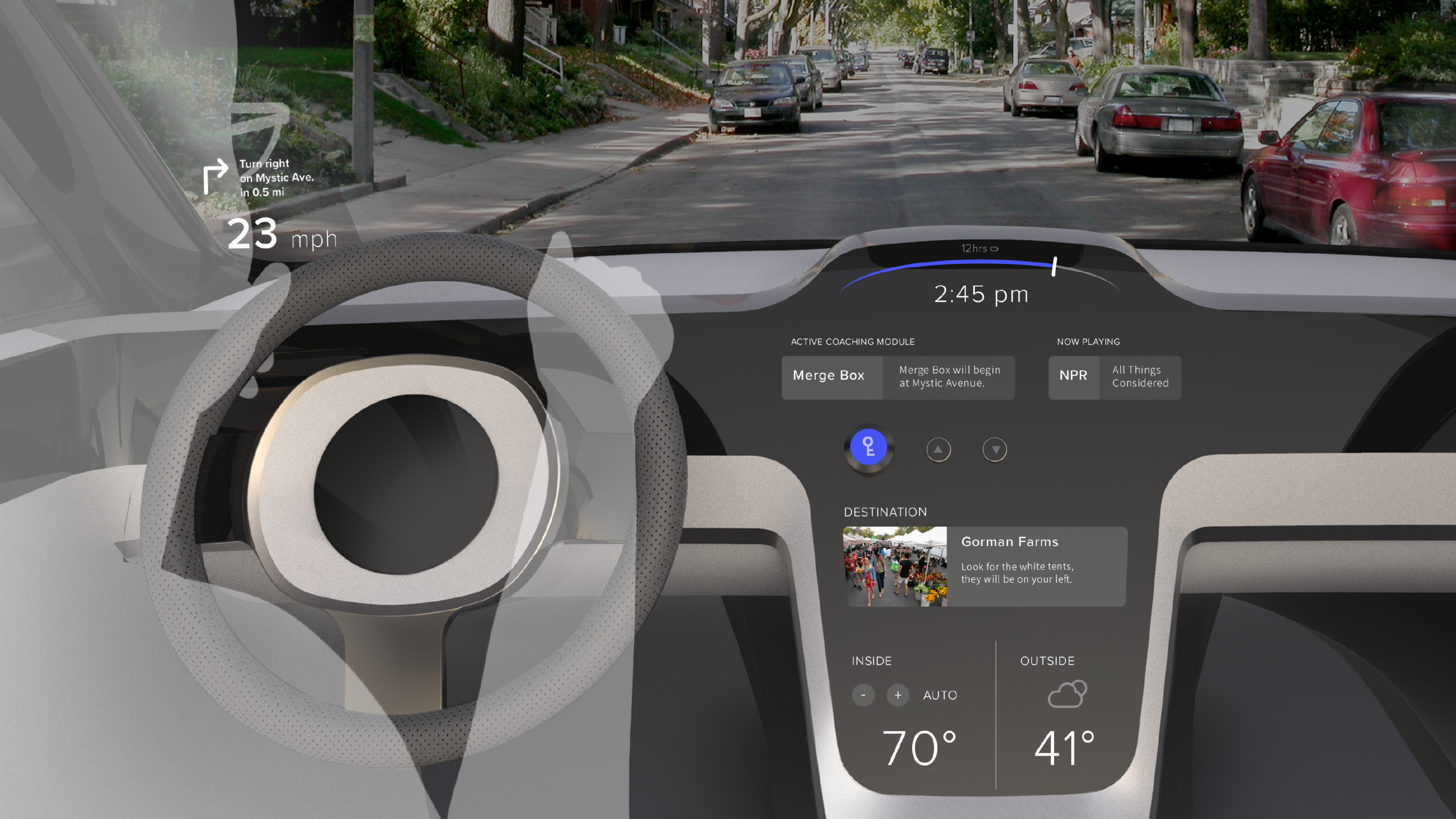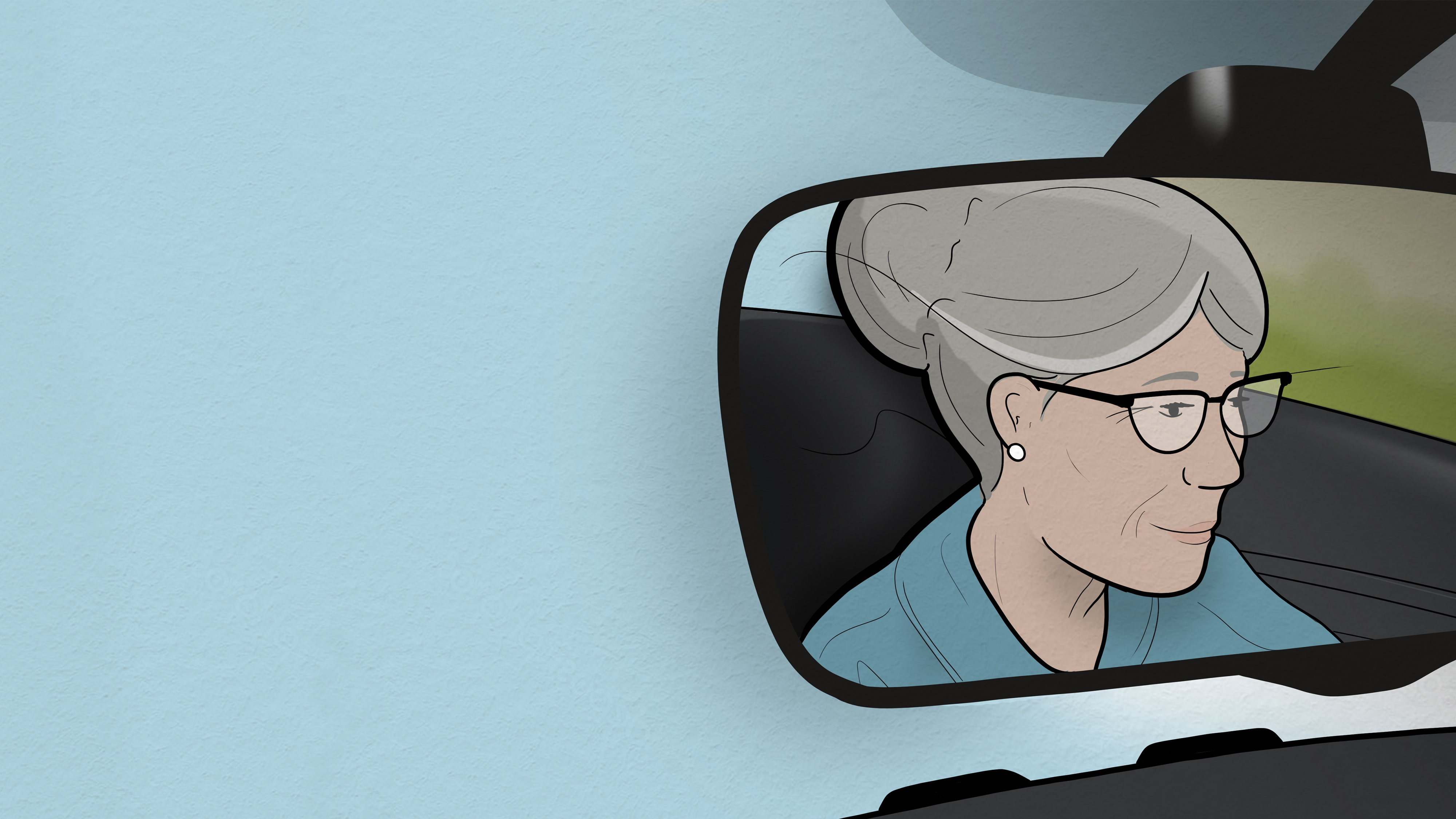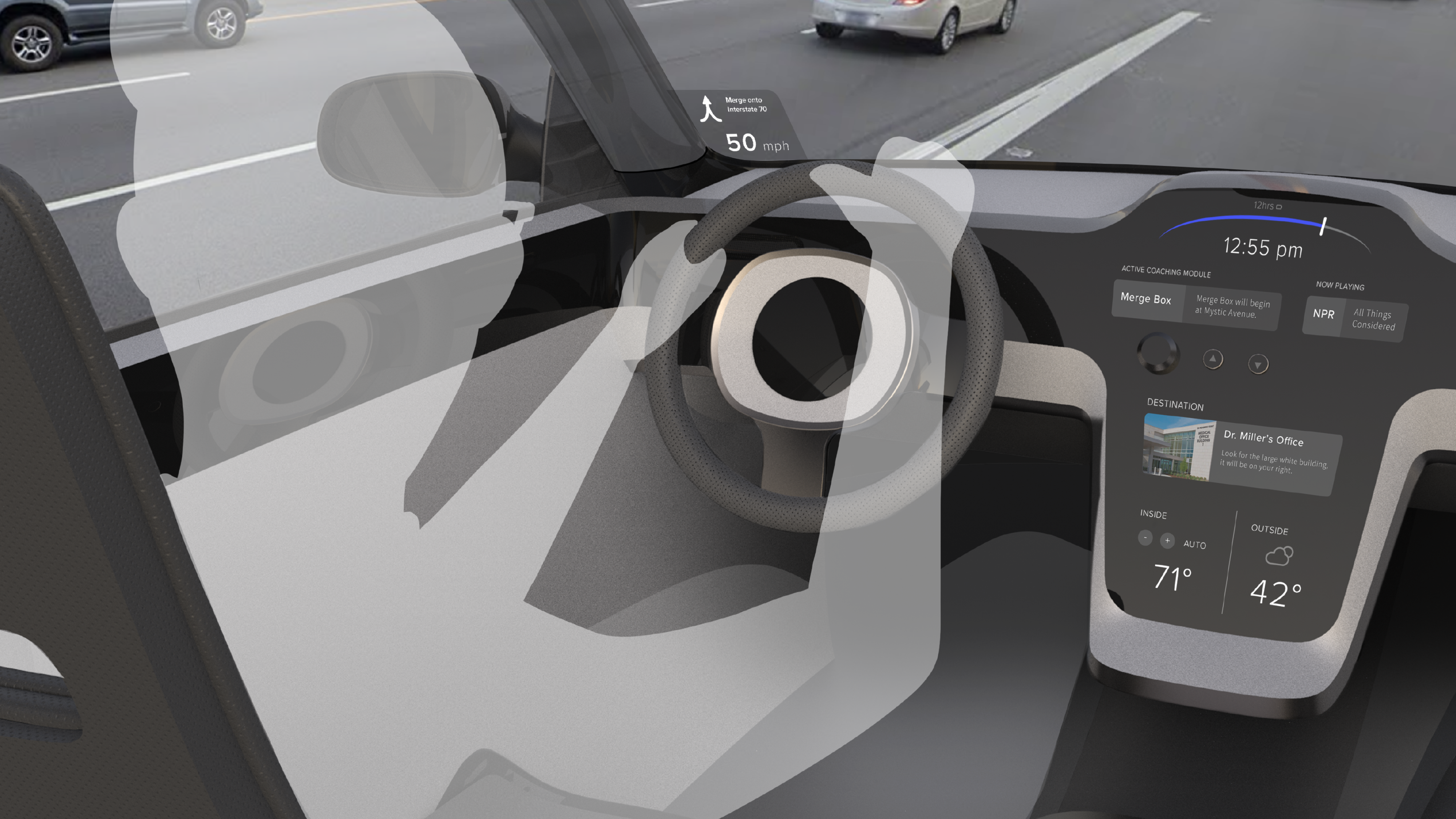Merging physical and digital experiences to enable senior drivers to stay safe on the road longer.
An experience concept for an aging population

Older Drivers Represent a Massive Underserved Market in the Driving Community
With the integration of digital tools, driving is reaching a level of complication that is overwhelming everyday drivers and leaving senior drivers, who aren’t familiar with digital tools in their day-to-day lives, alienated.
By 2025, one in four drivers will be 65+…
For Many Seniors, This Is Scary, Uncharted Territory
Drivers are on the road for longer than they have ever been before. This leads to drivers dealing with a range of physical changes that they may not be fully aware of, hindering their ability to drive. As such, drivers 65 and older are 16% likelier than adult (25-64) drivers to cause an accident.
Giving Up Driving Is An Emotionally Complicated Ask
Both for the driver and their loved ones, it is a heavy decision to decide to stop or even reduce driving. In our conversations with drivers and their families, we landed on four insights that explain why.
Technology Is Out There, It Just Isn’t Accessible
Much of the technology that could help senior drivers exists in the world, it just isn’t applied in a way that is accessible to them.
Using existing technologies as reference, we must build solutions that don’t repeat the same mistakes.
The Right Solution Should Be Seamless
Full automation is not the answer right now, it is still years out and cannot help the current drivers on the road. We need a solution that uses light automation to step in where drivers need help. By improving the integration of a digital ecosystem within the car, we can help older drivers retain independence in a world where they are still reliant on cars to get around their community.
That’s where Project Silverkey comes in… naturally and progressively filling in the gaps and extending the time that a driver can be safely on the road.
What Is Project Silverkey?
More than a car or a just a digital service, Silverkey is an ecosystem that can connect the in-car experience to outside services. The in-car experience is enabled through that connection.
To show what Silverkey is capable of, we put together a persona based on people we talked to. Consider Deborah’s story.
There are many ways that Silverkey can help Deborah maintain her driving independence, safely. Keep watching to find out just how Silverkey assisted her in practicing safe driving habits.
Silverkey helped Deborah stay on the road longer and assisted her in practicing safe driving habits. The concept shows how we can rethink the application and value of digital ecosystems in mobility.



